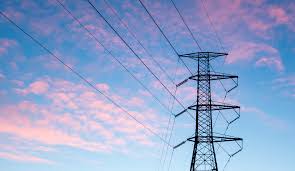The U.K. has been gradually boosting its energy security by increasing its renewable energy capacity while continuing to produce natural gas. It has done this while also moving away from the ‘dirtiest’ fossil fuel, coal. The diversification of the U.K.’s energy mix is helping the island country to develop its resilience and help it accelerate the green transition. Now, the government must ensure that the country’s transmission infrastructure is prepared for an influx of new clean energy projects in the coming years, and can reliably deliver clean energy to tens of millions of households across the U.K.
The risk of blackouts in the winter months in the U.K. has fallen to its lowest in four years thanks to the rise of the country’s renewable energy capacity. The National Energy System Operator predicts that the U.K.’s winter power supplies will outpace demand by nearly 9 percent this year. Neso is the new company in charge of keeping the lights on, which was bought by the government in September from National Grid for $825.5 million. The boost in the power supply margin is supported by the recent deployment of large-scale battery storage projects, small-scale renewables and imported electricity, according to Neso.
As well as producing greater quantities of clean energy at home, the U.K. has also begun importing renewable energy from Denmark through the world’s longest high-voltage power cable – the Viking power link. This cable now provides clean electricity for around 2.5 million U.K. homes, showing the significant potential for clean power sharing across countries.
The optimistic forecast comes in spite of the closure last month of the U.K.’s last coal¬-fired power plant. At the beginning of the year, the Ratcliffe-on-Soar coal plant was used to provide 2.3 percent of the country’s electricity supply during a period of cold weather. Britain kept its coal facilities on standby following the Russian invasion of Ukraine and subsequent sanctions on Russian energy, mainly natural gas, to ensure there would be power even in the face of severe gas shortages. However, there will be no such backup this year, and, according to Neso, no such need for a backup.
Gas reserves across Europe have been restored to around 95 percent full. The U.K. is no longer dependent on Russia for its gas, having doubled down on its long-standing relationship with Norway for its LNG supply. Britain will now import gas via Norwegian pipelines and tanker from the U.S. and Qatar during the winter months to use in its power plants, factories and residential buildings. To ensure a steady supply of electricity to households, Neso will encourage consumers to reduce their energy use during peak times by offering financial incentives through its demand flexibility scheme.
The U.K. was finally able to close its last coal-fired power plant in September, a target which was stated during the COP26 climate summit in Glasgow in 2021, after 142 years of reliance on coal. The U.K. was the birthplace of coal power, and it is the first G7 country to end coal production. The rapid transition away from a dependence on coal is impressive given that coal contributed 39 percent of the U.K.’s power in 2012. The U.K. established its first legally binding climate targets in 2008, which supported the phasing out of coal. In 2015, the then-energy and climate change secretary, Amber Rudd, stated that the country would stop using coal within the next decade. This has been made possible by the rapid expansion of the U.K.’s renewable energy capacity, with green energy rising to contribute over half of the country’s power in the first half of 2024, from just 7 percent in 2010.
Most of the U.K.’s electricity came from renewable energy sources for the first time in 2020, at around 43 percent. The green energy mix consists mainly of wind, solar, bioenergy and hydroelectric sources. In 2023, wind power contributed 29.4 percent of the U.K.’s total electricity generation, biomass contributed 5 percent, solar power accounted for 4.9 percent and hydropower added 1.8 percent of the mix. While the U.K. is currently depending on a mix of homegrown green and fossil fuel energy, as well as imports of energy from renewables and natural gas, the government plans to dramatically increase its renewable energy capacity by the end of the decade to solidify the country’s energy security. This includes increasing offshore wind output to 50 GW and solar capacity to 70 GW, as well as developing new nuclear plants.
Investing in the diversification of the U.K.’s energy mix has helped the country boost its energy security, as well as move away from a heavy reliance on fossil fuels. As the U.K. undergoes a green transition, the government is working in collaboration with utilities and regulators to ensure that the country does not face shortages, particularly in the winter months. This is further supported by strong energy agreements with other countries in Europe, North America and the Middle East, which will help to alleviate the burden of instability associated with renewable energy sources.

 Iran Energy News Oil, Gas, Petrochemical and Energy Field Specialized Channel
Iran Energy News Oil, Gas, Petrochemical and Energy Field Specialized Channel



